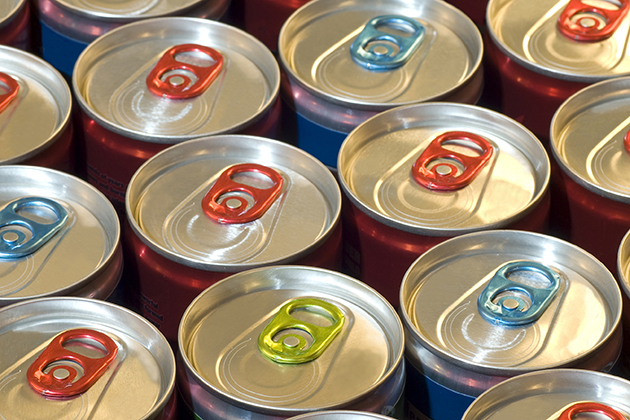Emerging evidence shows that highly-caffeinated,  often sugar-laden energy drinks can harm children and adolescents, and supports physicians’ groups and policymakers calling for restrictions on marketing and sales of these drinks to children under 18, according to a new study by the Rudd Center for Food Policy and Obesity at the University of Connecticut.
often sugar-laden energy drinks can harm children and adolescents, and supports physicians’ groups and policymakers calling for restrictions on marketing and sales of these drinks to children under 18, according to a new study by the Rudd Center for Food Policy and Obesity at the University of Connecticut.
This study examined the existing research on sales and marketing of energy drinks, their consumption by youth under 18, and growing evidence that they can be harmful and may lead to negative health, social, emotional, and behavioral outcomes, especially when consumed by youth.
“Energy drink consumption has increased rapidly over the past five years, despite increasing evidence of negative immediate and long-term health effects, especially when consumed by youth under 18,” says Jennifer Harris, a study author, associate professor-in-residence at UConn, and director of marketing initiatives for the Rudd Center. “Companies say these products are safe to market and sell to children as young as 12, but the evidence says otherwise.”
The study appears in the April issue of the journal Nutrition Reviews.
In contrast to declining sales for most other types of sugary drinks, sales of energy drinks increased by 53 percent from 2007 to 2012, and manufacturers continue to market these products directly to youth.
- In 2011, 35 percent of eighth-graders reported consuming an energy drink at least once in the past year and 18 percent consumed more than one on those days.
- Energy drink brands spent $282 million in advertising in all media in 2012, 2.5 times the amount spent in 2008, while TV ads viewed by youth doubled during this period.
- Red Bull and SK Energy shots purchased TV advertising during TV programming and social media viewed disproportionately more often by adolescents, while children saw more TV ads for 5-Hour Energy shots in 2010 than for any other beverage except Capri Sun.
According to the study, there is considerable evidence that energy drinks present a public health threat:
- The number of hospital emergency room visits by 12- to 17-year-olds attributable to energy drink consumption increased from 1,145 in 2007 to 1,499 in 2011. Deaths also have been reported.
- Calls to poison centers related to energy drinks increased from 672 in 2010 to 3,028 in 2013, with 61 percent of the calls concerning children 18 and younger. The reported effects included seizures, delirium, faster than normal heart rate, and irregular heart rhythm – all consistent with caffeine toxicity.
- Energy drink consumption by youth is also associated with sleep disturbances, anxiety, irritability, restlessness, and other dangerous behaviors, such as substance abuse, violence, and sexual risk-taking.
The American Academy of Pediatrics recommends that children and adolescents should not consume energy drinks, and the American Medical Association supports banning the marketing of energy drinks to children under 18 “to protect the health of American kids.”
However, major energy drink manufacturers disagree. During a 2013 hearing held by the U.S. Senate Committee on Commerce, Science, and Transportation, energy drink company executives asserted, “Red Bull is safe for teenagers and adults to consume,” and “We believe our product [Monster Energy Drink] is safe for teenagers, and there is no reason why teenagers should not be part of being able to consume the brand.”
In late 2014, U.S. Sens. Edward J. Markey of Massachusetts, Richard J. Durbin of Illinois, and Richard Blumenthal of Connecticut issued a report, Buzz Kill, based on information their staffs gathered from 12 energy drink companies. Eight of the 12 companies – constituting more than 90 percent of the energy drink market – refused to stop marketing their products to children 12 years old or older.
“Most major energy drink manufacturers have refused to address concerns raised by physicians’ groups and policymakers about the safety of their products when consumed by children under 18,” Harris says. “In the absence of voluntary actions by the industry, government policies may be necessary to protect vulnerable youth from these potentially dangerous products.”
Potential policy options include prohibiting sales of energy drinks to youth under 18, requiring warning labels on product packages, and prohibiting unfair and deceptive marketing practices.
The study was funded by the Robert Wood Johnson Foundation.



